Ford Mustang at 60: how the ‘blue collar supercar’ became a classic
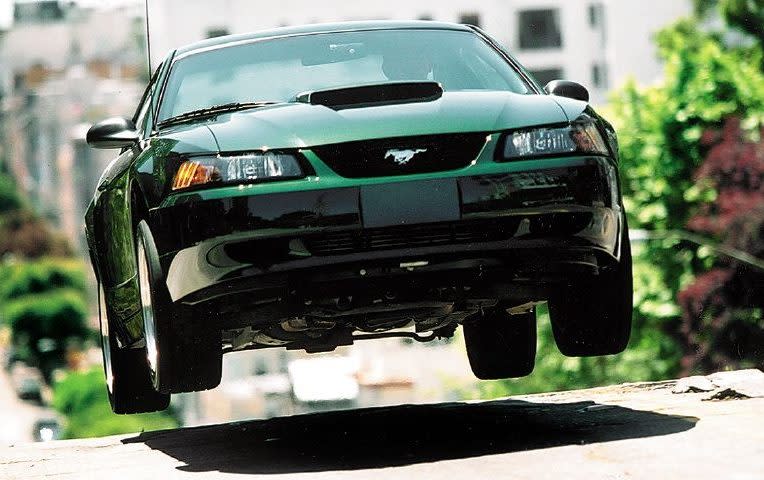
“The Beach Boys. Apple pie. The ’67 Mustang. Three things worth fighting for.” So runs an old US Navy recruitment advert, but what is it about the Ford Mustang that so captured American hearts and wallets? And still does.
Sixty years on, and with more than 10 million of all types sold, let’s just walk up to the quintessence of America’s automotive love affair just as Steve McQueen did in 1968 in the Peter Yates car-chase epic, Bullitt. Well perhaps not quite as McQueen did, since it would be difficult for anyone else to be that cool while wearing a royal-blue turtleneck and herringbone-tweed sports jacket while driving a Highland Green 1968 Ford Mustang GT fastback.
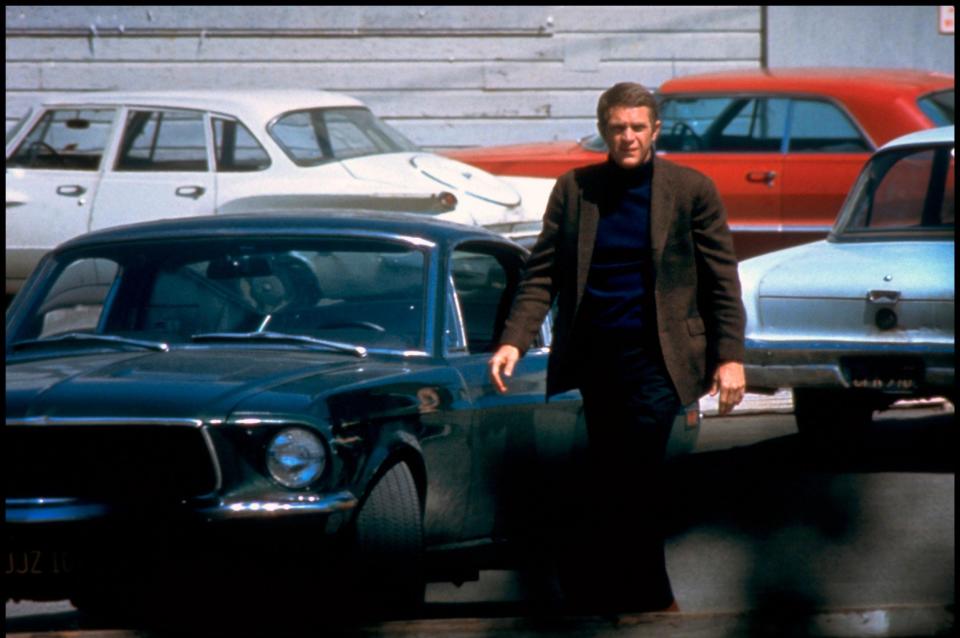
If it’s any measure of the reverence for the car and the man, in January 2020 one of the two original cars used in Bullitt sold for $3,740,000 at the Mecum auction in Kissimmee, Florida.
Besides, if you tried to recreate that sort of wheel-spinning, chassis-crashing, airborne antics these days you’d be arrested. In fact, I nearly was… But more of that later.
Bullitt wasn’t even the car’s film debut, however. That title belonged to the third James Bond outing Goldfinger, in 1964, the year of the Mustang’s launch, where the rumbling Pony Car got a supporting role against Bond’s suave Aston Martin DB5. Yet the Mustang was (and still is) so much more than a 390 cubic inch (6,391cc) V8-powered, high-speed blur of missing hubcaps careering down Russian Hill in San Francisco.
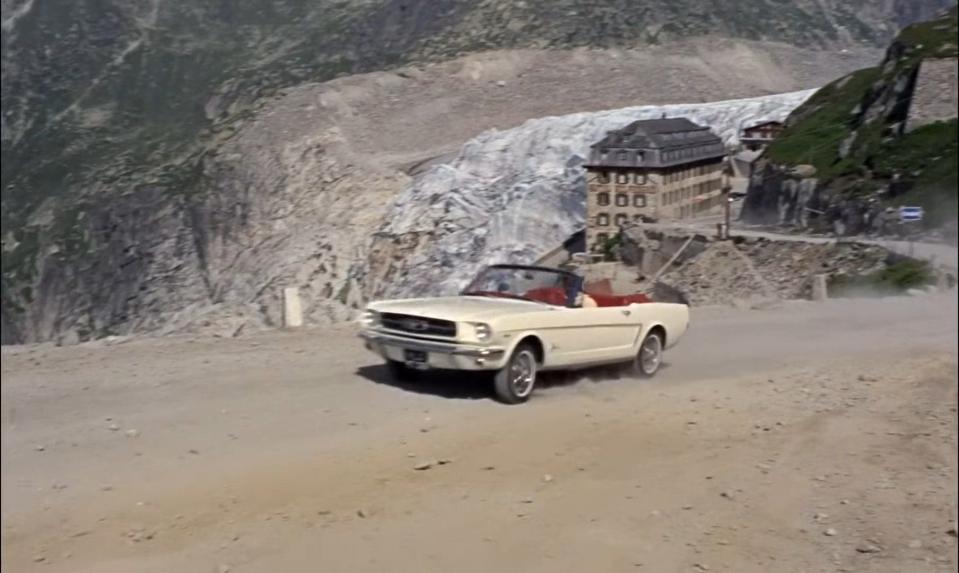
Marketing genius
By the early 1960s Ford was still reeling from the $250 million debacle of the failed Edsel model, so management was reluctant to listen to Lee Iacocca, a talented young product planning engineer, who was convinced that Ford should enter a new market segment, which became known as the Pony Car. Ford needed a competitor to the Chevrolet Monza, and a competition of independent design studios around the world resulted in the almost accidental discovery of a series of sketches by Ford designer Gale Halderman, including a fastback shape, which broke all of Ford’s then cast-iron design rules.
With just $50 million in the war chest, Iacocca and a talented team of engineers set to work. The idea was to appeal to postwar baby boomers, the young and young at heart, but make it attainable, hence the four-seat, two-door layout.
The name came from a lauded Second World War fighter plane and Iacocca’s marketing genius sparkled on the launch. Priced at $2,368, the Mustang first appeared on April 17 1964 at Flushing Meadows during the New York World’s Fair.
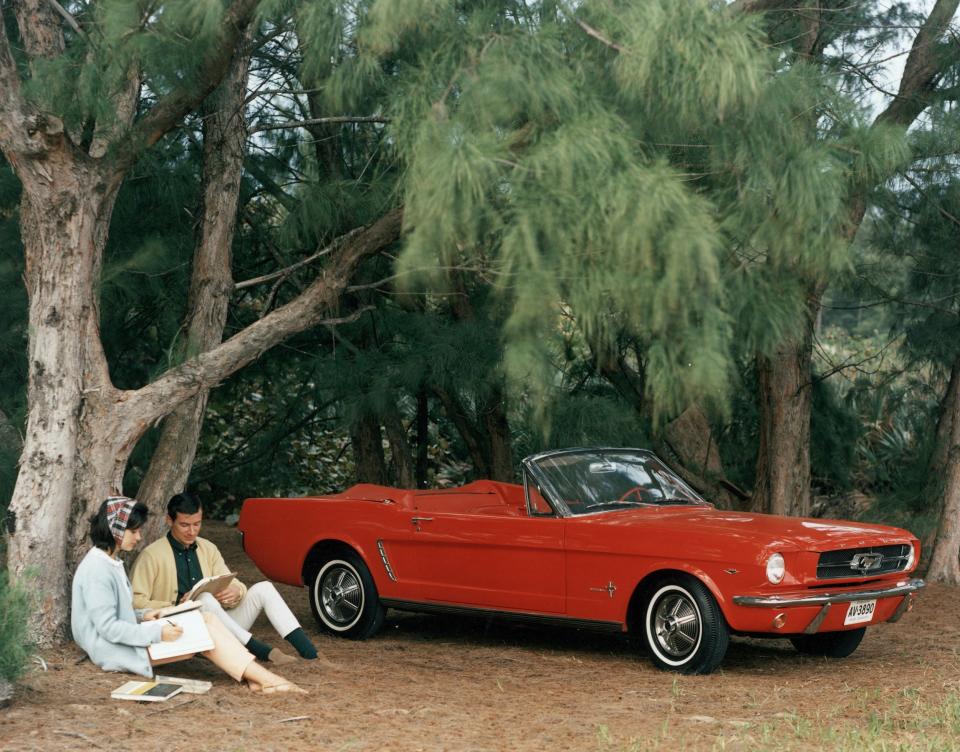
Stealing the show, the press coverage was effusive. And, quite brilliantly, on the same day, the Mustang debuted at every Ford dealership in the US. Ford sold 22,000 in the following days which makes it one of the fastest-selling cars ever. By the end of 1964, 415,000 Mustangs had found owners.
Enshrined in popular culture
Everyone wanted a Pony Car and the media followed suit. In an early pop video Martha Reeves and the Vandellas were filmed singing Nowhere To Run in a Mustang convertible as it travelled down the fully operational assembly line at Ford’s Dearborn factory in 1965. Wilson Pickett sang Mustang Sally in 1966, but the Zip Codes scooped them all with The Fancy Filly From Detroit City in 1964. There were even sunglasses, Ford Mustang Renauld Spectaculars, which were the classy shades worn by Rossano Brazzi as Beckerman in the opening credits of The Italian Job.
But while Beckerman was driving an exotic Lamborghini Miura, the Mustang was a more attainable vision, a blue-collar performance coupé exactly as Iacocca had envisioned.
I’ll let you into a secret here. While the Mustang was an American icon, it wasn’t much of a drive. In some ways that was the point. The original was based on unexceptional chassis parts from the lumbering Falcon and Fairlane saloons, topped with stylish sheet metal. I’ve driven those early cars and they feel like piloting a signal box, with heavy controls and insubstantial feedback. Slow in, fast out is the key to cornering – that allows more time to stand on the accelerator and experience the way the rear tyres explode in a smoky orgy of tortured rubber.
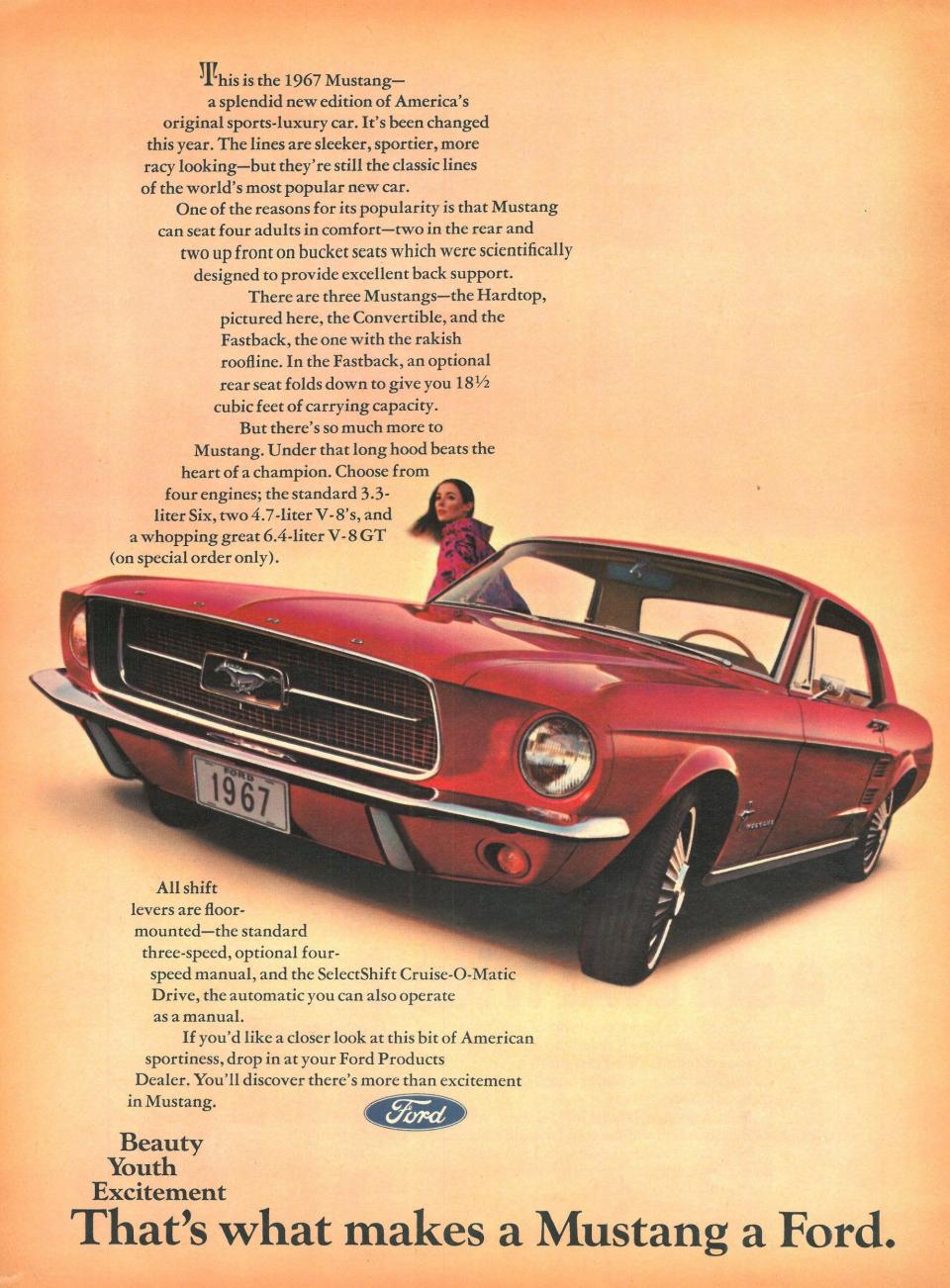
From the original 1964 coupés, the 1968 Mach 1 and even the 1966 Shelby GT350 (of which 1,000 were put on the fleet of car rental giant Hertz for $17 per day) right through to the questionable “aero-look” 1980s models and the 2001 “Bullitt” tribute model, the Mustang was a flexible, oversteering monster with occasionally dubious build quality.
The big sellout
And while the original looked terrific, Ford’s designers soon sold out their blue-collar coupé, with the Mustang becoming the joke of corporate American car making. In 1979 the third-generation Mustang was launched on Ford’s ubiquitous Fox platform, which buried Haldeman’s finely wrought proportions and had possibly the worst car headlight treatment ever seen.
As Iacocca, Ford’s general manager at the launch, later mourned: “Our customers abandoned us, because we’d abandoned their car.”
By 2003, with the main opposition, General Motors’ Camaro and Firebird, out of production, Ford made only 140,000 Mustangs and its Pony Car looked ready for the glue factory. Fortunately, someone at Ford still loved the Mustang and designer J Mays’s sharp, back-to-basics retro concept at the 2002 Detroit motor show went into production in 2004 at Ford’s Flat Rock plant in Michigan. I was there when the car appeared in Detroit at the beginning of the century and the excitement was infectious; America had fallen in love with the Mustang all over again.
Engineered by a team under Hau Thai-Tang (aka “the man who put the Tang back into Mustang”), that Mk5 version was still far from cutting edge mechanically, sporting an antediluvian live rear axle, for example. In 2015 the Mk6 improved things with better brakes, gearbox, interior and independent rear suspension, along with the quiet dropping of the V6-engined derivative. It was officially offered in Europe and in right-hand drive in the UK.
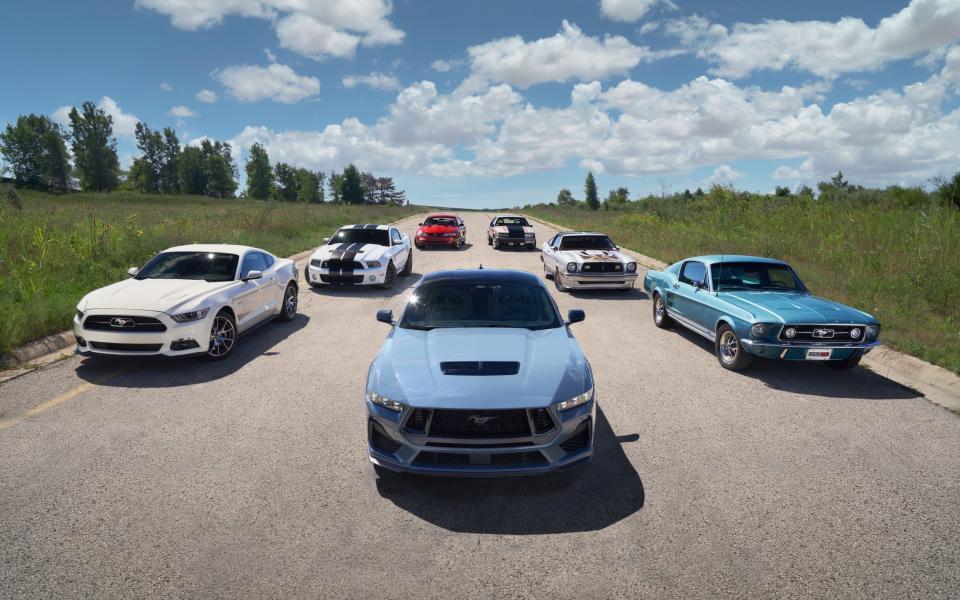
The electric Mustang
These days Ford’s spin doctors play down the petrol-engined model (even though it does good business and has a huge following around the world). Instead, they’ll try to sell you the Mustang Mach E, a sporting-looking SUV powered by lithium ions rather than a V8 swilling the finest four star.
A battery Mustang! This was a faux pas worse even than the four-cylinder model which, while reasonably competent, is simply not a “proper” Mustang. The battery-powered Mach E seemed straight out of the Marketing Gone Wrong textbook and Mustang enthusiasts disowned it, which is a shame as it’s a reasonable electric car, just not a pukka Mustang. The Mach E went on sale in 2020 and sales have been distinctly modest (around 40,000 in the US, 25,000 a year in Europe and the UK).
Emulating Steve McQueen
Back in 2001 I attended the launch of the Bullitt Mustang, the last of the pre-J Mays models, a limited-edition special with a souped up 265bhp/305lb ft 4.6-litre V8 engine along with stiffened and strengthened chassis and suspension. It looked the part and Ford was monstering the Bullitt movie connection, starting with an interview with Steve McQueen’s son Chad, then off to Pacific Heights in San Francisco to reenact a scene from the film on the public road.
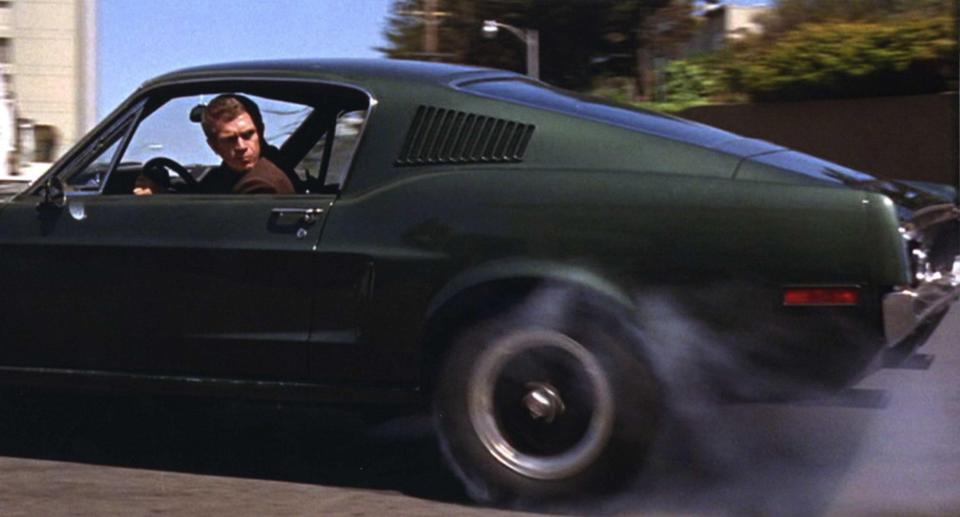
Jumping production cars is a highly risky activity, even on a test track, but here the roads were lined with parked cars, pedestrians and traffic. It all seemed unbelievably dangerous, but too good to decline.
“Let’s get this done,” said ace photographer Charlie Magee and with the California Highway Patrol outriding, we headed off, first on the road.
At the chosen spot, the cops cleared the roads and Charlie stood ready on the other side of the hill with his finger on the Nikon.
Charlie and I had UHF radios, the police had their own working of a different frequency. Big mistake.
After one distinctly ground-based dummy run, I backed up the car and readied for another attempt. Charlie got the thumbs up from the police and radioed me.
“I think you’ll need to put a bit more vim in it,” he said.
I gave it everything, side-stepping the clutch at about 4,000rpm and filling the road with acrid tyre smoke as the Mustang howled and hurtled forward with the momentum of a steam locomotive.
However, a guy in a huge pick-up truck had pulled out of a side turning and stopped in my landing area to ask the cops what was going on.
Meanwhile I was into second gear, the engine bellowing, the tyres still alight and ready for air…
“Move, move,” yelled the cops to pick-up guy, but he was slow to react.
On the crest, the Mustang lifted its nose and flew. As the bonnet started to tip down, I could see everything: Charlie, the cops, the pick-up, the Pacific Ocean and my one-way trip to the Pearly Gates…
The pick-up had started to move, but it was so slow.
It was luck rather than judgement that allowed the flying Mustang to land perfectly, missing the pick-up’s tailgate by a matter of inches. As the car rolled down the hill, I buzzed Charlie.
“Did you get it?” I asked. Of course he did.
After such a close shave, the police had second thoughts about the whole business and no one else got to jump the Mustang in San Francisco on that or any other day.
A cause for celebration
The 60th anniversary is being celebrated all round the world with owners’ club meets and Mustang-themed get-togethers. The British Motor Museum at Gaydon in Warwickshire saw an estimated 700 owners attending a two-day festival earlier this month and, on April 27 and 28, the Classic Car Boot Sale will welcome a cornucopia of Mustangs and parts at Granary Square, part of the restored Kings Cross public space.
So, while it might be cheap horsepower and be viewed in some quarters as spectacularly politically incorrect, when you climb behind that deeply dished steering wheel and press the red starter of a Mustang, you’re driving a very special part of American history which is even more redolent in these times where the freedom of the open road seems a vanishing commodity.
As Martha sang in Nowhere To Run: “I know you’re no good for me.” But you probably still want to drive a Mustang…

 Yahoo News
Yahoo News 
